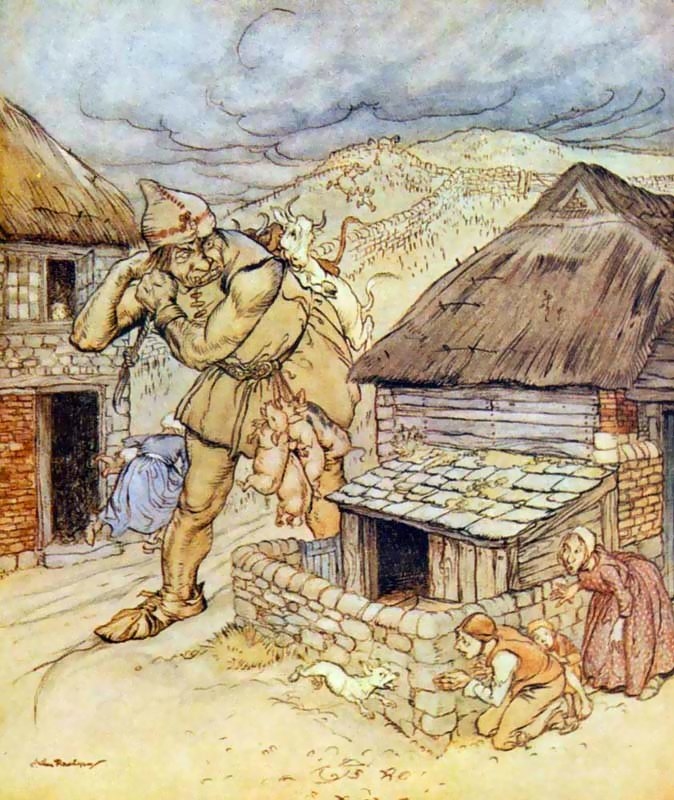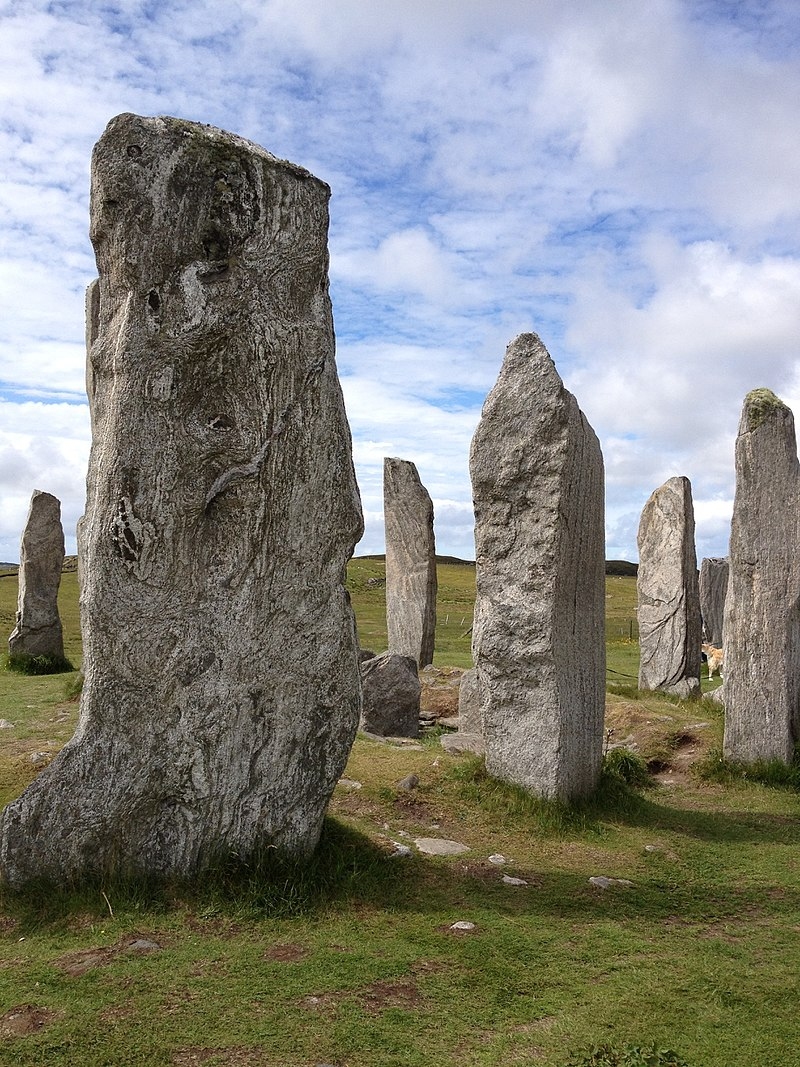The giants of medieval folklore are dull creatures. They are regarded as men of extraordinary size, strength and appetite, but very little intelligence. They could be, on occasion, generous or helpful but they also appeared as ogres, vicious creatures living off human flesh. Many stones, caves and other natural features were attributed to them. The most well-known is the Giant's causeway in Northern Ireland, reputedly created by Fingal, the resident of Fingal's Cave.
English giants were believed to have been the descendents of the thirty-three daughters of the Emperor Diocletian. They murdered their husbands and were set adrift in a ship which eventually reached Albion (England). There they associated with demons, and their children were the giants who, according to Geoffrey of Monmouth, were the only inhabitants of England when Brutus arrived from Troy. Geoffrey also wrote how the last giant was eliminated. Corineus of Cornwall enjoyed wrestling with the giants, and when Brutus was attacked by a pack of them at Totnes, he defeated them all except for a monster called Gogmagog. This one remaining giant, Brutus offered to Corineus as a wrestling partner.
Corineus and Gogmagog grappled violently, each caught in each other's hold. Gogmagog squeezed Corineus with all his strength and broke three of his ribs. Enraged, Cornieus summoned all his might. He hefted Gogmagog to his shoulders and running as fast as he could under the weight that he bore, rushed off to the nearby coast. Clambering up to the top of a cliff he threw Gogmagog into the sea. The place took its name from the fact that the giant was hurled down there and it is called Gogmagog's Leap to this day.
Gogmagog has many parallels in other mythologies and literature – most of which come from retellings of the stories in which giants appeared as barbaric spirits. The tales were made plausible by rare cases of giantism in real life and by the discovery of the fossil remains of pre-historic creatures. Medieval knowledge of anatomy was minimal, and any find from a creature of uncommon size was immediately classified as giants' bones.
Scottish giants did not have a good reputation. They were greedy, boastful, and had a taste for human flesh. All over Scotland there are archaeological artifacts such as standing stones, burial barrows and cairns, and natural phenomenon like rocks and crags in the shapes of chairs, desks and tables that were considered to be the relics of a race of giants who were thought to have lived in certain localities.
The highlands region of Scotland was the home of giants known as Formorians. They were believed to live in hills, mountains, caves, and island sanctuaries. The lowlands of Scotland had their giants as well. They are usually grouped in pairs of rivals throwing things at each other. Boulders standing stark in field are said to be these giants' near misses. Many landmarks in Scotland have the prefix 'giant' including:
Many of Scotland's ancient standing stones have related giant stories. The Callanish stones of Uig, Lewis are talked about in some old tales as being giants that St. Kiaran turned to stone for disobeying the tenets of Christianity.
Return to: Beasts in Myth and Legend: E - G

In folklore from all over Europe, giants were believed to have built the remains of previous civilizations. Saxo Grammaticus, for example, argues that giants had to exist, because nothing else would explain ... Read more at Wikipedia.

The Callanish Stones are an arrangement of standing stones placed in a cruciform pattern with a central stone circle. They were erected in the late Neolithic era, and were a focus for ritual activity ..." Read more at Wikipedia.